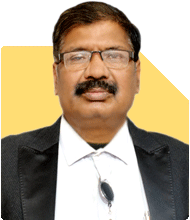Hi
I am 45 years old, having 2 daughters.
Need advice how can I invest money for my future.
I earn 2 lakh per month
Ans: You are 45 years old with two daughters. You earn Rs 2 lakh per month. This gives you a good platform to plan your future. You are in a strong position to create wealth, protect your family, and plan for your daughters’ goals.
Let’s build a full strategy to help you grow, protect, and secure your money.
? Understand Your Financial Goals
– Begin with listing your life goals.
– Think about short-term, medium-term and long-term goals.
– Children's education and marriage will need focused planning.
– Retirement planning is also very important at this stage.
– Emergency fund, home upgrade, travel, and medical needs should also be covered.
? Assess Your Current Situation
– You earn Rs 2 lakh monthly. This gives financial comfort.
– You must know your current savings, investments, loans, and expenses.
– Keep track of your monthly surplus after regular expenses.
– This surplus is the base for your wealth building.
? Emergency Fund Must Be in Place
– Set aside 6 to 12 months’ expenses in liquid form.
– Keep it in a savings account, sweep-in F.D, or liquid mutual fund.
– Do not mix emergency funds with long-term investments.
– This gives peace of mind in job loss or health issues.
? Health Insurance and Term Insurance
– Take a family floater health insurance if not already done.
– Ensure it covers at least Rs 10 to 15 lakh.
– Even if employer gives group cover, buy your own.
– Also take a pure term insurance plan for yourself.
– It should cover at least 12–15 times your annual income.
– Avoid insurance-cum-investment plans. Returns are very poor in such policies.
? Review Existing LIC or ULIP Policies
– If you hold LIC endowment, money-back or ULIP policies, review them now.
– Most such policies give very low returns, often below 5% per year.
– Surrender such plans after checking surrender value and exit charges.
– Reinvest the money in mutual funds for better growth.
– Protecting family is best done through term insurance, not investment-linked policies.
? Asset Allocation: The Core of Investment Strategy
– Asset allocation gives stability and better returns over time.
– At 45 years of age, a balanced allocation is preferred.
– Around 60% can be in equity, 30% in debt, and 10% in gold.
– You can adjust based on your risk comfort.
– This mix balances growth and safety.
? Monthly SIPs for Long-Term Wealth Creation
– Start SIPs in mutual funds every month from your surplus.
– Equity mutual funds can help in long-term goals like retirement.
– SIPs create discipline and reduce risk through rupee cost averaging.
– Select actively managed funds. Avoid index funds and ETFs.
– Index funds just mirror markets. They don’t adjust in down cycles.
– Active funds have expert managers. They take better decisions in changing markets.
– Avoid direct plans if investing by yourself.
– Direct plans save on cost but lack guidance.
– Invest through regular plans via MFDs with CFP credentials.
– This gives you regular reviews and personal advice.
? Plan for Daughters’ Education
– You have two daughters. Their higher education needs careful planning.
– Estimate the cost based on current fees and inflation.
– Use mutual funds for this goal.
– Allocate to equity funds if time horizon is more than 5 years.
– Closer to goal, shift to safer debt funds.
– Start SIPs with goal-linked amounts.
– Track progress every 6 months. Adjust if needed.
? Plan for Daughters’ Marriage
– Marriage is another major goal.
– Keep a separate investment plan for this.
– You can use balanced mutual funds if the timeline is 7 to 10 years.
– Avoid gold jewellery purchases now.
– Invest in digital gold or gold mutual funds for liquidity and growth.
? Retirement Planning Starts Now
– You still have 15 years to retire.
– That is a good time frame to build your retirement corpus.
– Use equity mutual funds to build wealth.
– SIPs, lumpsum investments, and bonuses should be directed to retirement.
– Have a clear retirement goal in mind.
– Consider expected lifestyle cost post-retirement.
– Don’t depend only on PPF or F.Ds for this goal.
? Avoid Real Estate as Investment
– Real estate gives poor liquidity and high entry costs.
– It also needs high maintenance and may stay idle.
– Rental yield is low.
– You already have a steady income. You don’t need rental income dependency.
– So avoid new real estate purchases as an investment tool.
? Tax Efficiency in Investments
– Mutual funds offer better tax-adjusted returns than F.Ds.
– Equity mutual funds held for more than 1 year have LTCG tax of 12.5% over Rs 1.25 lakh.
– Short-term gains in equity funds are taxed at 20%.
– Debt mutual funds are taxed as per your income slab.
– So plan your holding period smartly.
– Avoid frequent selling of mutual funds.
? Avoid Annuities and Guaranteed Return Products
– Annuities give very low returns.
– They also lack flexibility and have long lock-ins.
– Many insurance-linked guarantees are mis-sold.
– Avoid such low-yield, high-lock products.
? Use Goal-Based Investment Buckets
– Split your investments based on goals, not random SIPs.
– One SIP bucket for retirement, one for education, one for marriage, etc.
– This helps in clarity and focused tracking.
– Each goal has different risk and time frame.
? Avoid Risky Investment Behaviour
– Don’t chase hot tips or latest trends.
– Avoid crypto, futures, options, or direct equity without expertise.
– Stay away from unknown apps or schemes promising fixed monthly returns.
– Stick to proven, regulated, and guided products.
? Gold Allocation for Stability
– Around 5–10% of your portfolio can be in gold.
– Use gold mutual funds or sovereign gold bonds.
– Avoid physical gold for investment.
? Review and Rebalance Every Year
– Portfolio review is a must once in 6 to 12 months.
– Rebalance asset allocation if it shifts from target.
– For example, equity may grow to 70% from 60%.
– Rebalance it back to 60%.
– Review performance of funds too. Replace if lagging continuously.
? Estate Planning and Nomination
– Create a Will.
– Ensure all your investments and accounts have nominations.
– Share investment details with spouse or trusted person.
– This keeps things smooth for the family later.
? Work with a Certified Financial Planner
– You have many responsibilities and goals.
– A Certified Financial Planner helps you with a 360-degree plan.
– They offer customised strategies, regular tracking, and course correction.
– Investing without guidance often leads to mistakes.
– A planner ensures you stay on track for every goal.
? Finally
– You are financially sound at age 45.
– With structured planning, you can build wealth for your future.
– Use equity mutual funds for long-term growth.
– Avoid index funds, direct plans, and real estate.
– Invest through regular funds with help from an MFD-CFP.
– Secure your family with term and health cover.
– Build goal-based SIPs and keep rebalancing.
– Stay disciplined and track regularly.
– This approach will bring financial peace for you and your family.
Best Regards,
K. Ramalingam, MBA, CFP,
Chief Financial Planner,
www.holisticinvestment.in
https://www.youtube.com/@HolisticInvestment





















